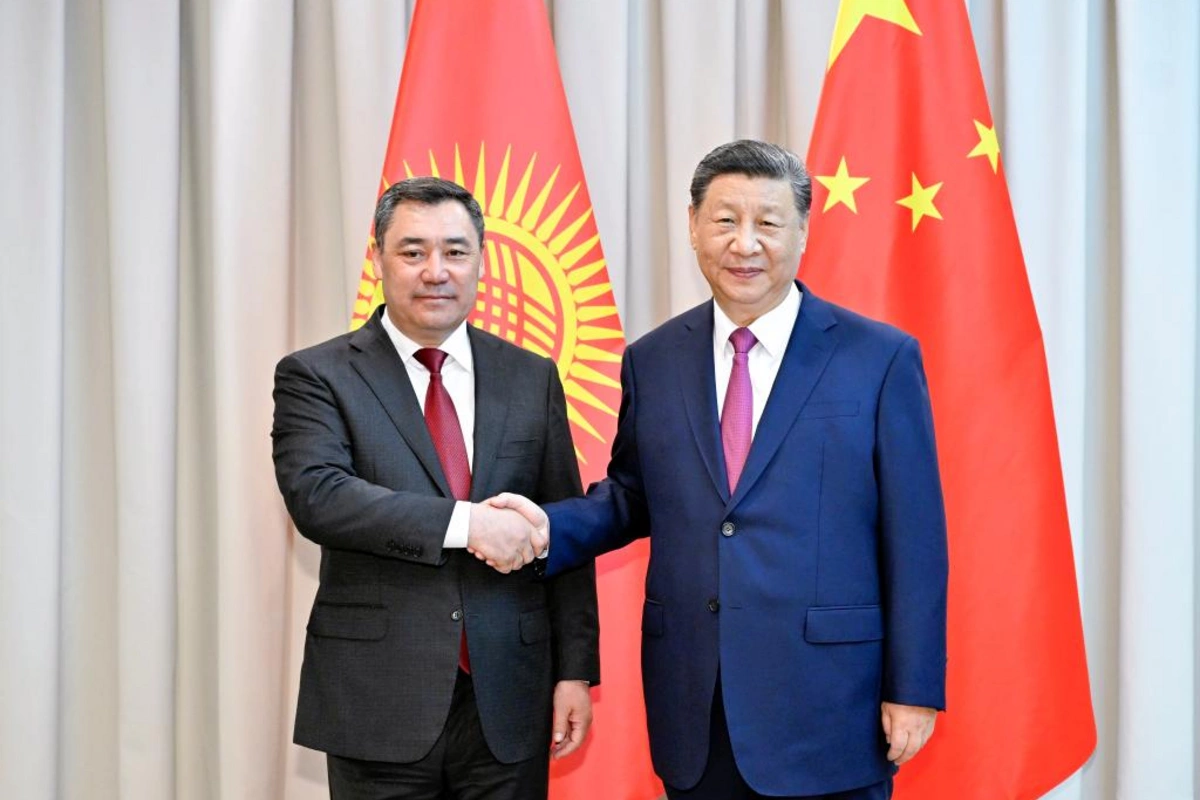
The project aims to attract international business, transforming northern Kyrgyzstan into a trade nexus comparable to major ports.
Kyrgyzstan, with its strategic geographical position and ambitious goals, is poised to play a key role in the "New Silk Road" initiative, taking a new step towards economic growth. A recent milestone in this journey is the creation of the "Manas" trade and logistics hub, inaugurated on October 17, 2023, with the participation of Kyrgyzstan’s Cabinet Chairman Akylbek Japarov and Chinese Ambassador Du Dewen. However, behind the impressive $4.2 billion investment lies both immense potential and a set of risks that Kyrgyzstan must carefully navigate.
The new "Manas" logistics center occupies a strategic location: the village of Leninskoe in the Chuy Region, situated just a few kilometers from the Kazakhstan border, making it a pivotal point for trade across Eurasia. The center is planned to include a trade hub, exhibition spaces, bonded zones, warehouses, hotels, and even residential complexes — effectively becoming an economic city. The project aims to attract international business, transforming northern Kyrgyzstan into a trade nexus comparable to major ports.
According to the plan, the "Manas" trade and logistics center will not only facilitate Chinese goods but also expand export opportunities for Kyrgyzstan and its neighboring countries. Economically, this could be a game-changer for Kyrgyzstan, where small and medium-sized businesses often struggle with limited market access and infrastructure.
The $4.2 billion investment is a significant sum for Kyrgyzstan. The initial phase alone will require $700 million, with the Kyrgyz government holding a 49% share. This partnership format with Chinese investors places certain obligations on Kyrgyzstan but also raises natural concerns.
The benefits of this partnership are clear. China already holds the position of Kyrgyzstan's primary trading partner, with bilateral trade reaching $20 billion in 2023, a 32% increase from the previous year. With enhanced infrastructure, trade flows will likely continue to grow, bolstering the regional economy and generating new jobs.
On the other hand, China's involvement, known for its pragmatic investment approach, calls for caution. Kyrgyz authorities must carefully monitor the terms of agreements to avoid debt traps or loss of control over essential project assets. Future changes in managing the hub will be particularly critical — with billions invested, Chinese stakeholders are likely to seek substantial influence over its operations.
A key point underscored by Akylbek Japarov is the potential for significant job creation and increased export capacity. Kyrgyzstan indeed has a chance to become a major logistics platform for goods from Central Asia and beyond, strengthening regional cooperation. At the same time, this project could increase Kyrgyzstan’s economic reliance on Chinese capital.
Kyrgyzstan is not alone in collaborating with China on trade and infrastructure projects. Similar projects have been implemented in other developing countries, with mixed results. In some cases, rapid growth ensued, while in others, economic challenges arose as countries faced mounting debt obligations and lost economic flexibility. How Kyrgyzstan plans to avoid a similar fate remains an open question.
Beyond economic considerations, it is essential to weigh the potential impact on Kyrgyzstan's internal affairs. On one hand, the project may drive the influx of new ideas, technology, and work standards. On the other, Kyrgyzstan must anticipate potential social and environmental repercussions. For local residents, new job opportunities may emerge, but so will higher demands for skills, infrastructure, and social services.
Additionally, there is the risk of increased migration due to the influx of workers and trade flows, which could lead to cultural and social tensions. This scenario has played out in other countries where large infrastructure projects attracted temporary workers, placing additional strain on local resources.
The ambitious "Manas" project undoubtedly holds promise as a catalyst for Kyrgyzstan's economic growth. However, as with many large projects involving foreign investment, success will depend on Kyrgyz authorities’ ability to balance risks and protect national interests. Monitoring the project's impact on the environment and local communities will be a crucial step.
Whether Kyrgyzstan can fully capitalize on the potential of this powerful logistics hub or if it will increase dependence on China remains a critical question. Kyrgyzstan must be vigilant to ensure that rapid economic growth does not come at the expense of its sovereignty over its territory and economy.
On the Eurasian map, the "Manas" trade and logistics center will emerge as a new link connecting the region to global markets. If Kyrgyzstan can wisely leverage this project, it stands on the threshold of a promising future in international trade. Achieving this success, however, will require a cautious balance between external investments and the protection of domestic interests, ultimately shaping the fate of this ambitious endeavor.
Share on social media

